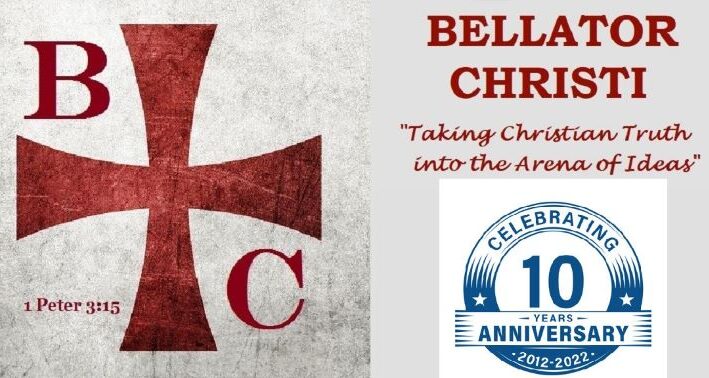I have, among many other issues, a medical problem. I have what is called “myopia.” Myopia is the technical term for “near-sightedness.” I can see close up, but I cannot see far off. I grew up in foothills of North Carolina, close to the Virginia border. It’s an area where the mountains are nearly always in view. When I was about seven or eight years old, I began to notice that the mountains began to look fuzzy. At some times, it appeared that there were two sets of mountains when in reality only one existed. The ophthalmologist helped my problem by prescribing glasses for me. To this day, I have to wear either glasses or my contact lenses to see properly. Otherwise, I cannot see except for things nearest to me.
Often, we suffer from spiritual myopia. We see things that are closest to us and those things taking place in the world. Such a focus may leave us feeling overwhelmed. When we feel such emotions, we know it is time to put on our spiritual lenses. This Easter, we need a special reminder of God’s really big plan found in and through the life of Christ. Today, Paul provides to us an ancient hymn. The majority of scholars believe that this hymn predates the writing of the New Testament. The hymn, popularly called “The Hymn of Christ,” dates back to the earliest church. Along with other early confessions (Romans 10:9) and creeds (1 Corinthians 15:3-7), Paul likely received the hymn of Philippians 2:6-11 in AD 35 when he met with the apostles in Jerusalem (Galatians 1:18), particularly Simon Peter and James the brother of Jesus, to confirm the gospel message that he was preaching.[1] What do we find of God’s big plan found in Christ? We find a five-point plan.
1. Christ’s PREEXISTENCE is evidence of God’s ETERNAL plan (2:6).
Paul first notes that Christ was in the form of God. Though Christ “was in the form of God, did not count equality with God a thing to be grasped” (2:6).[2] In other words, Paul is saying that Jesus was divine. Jesus existed before he was born. This is a tough concept to imagine. However, Paul further shows that Christ did not use his divinity as a means of praise or adulation. Rather, Christ humbly left the throne of heaven to fulfill the Father’s plan. Due to God’s omniscience, God realized that if he made individuals with free will that eventually humanity would choose wrong. Why allow humanity to choose? It was to allow for perfect love to be exemplified. The sheer logic of it all dictates a salvific plan. God chose from the foundation of the world to save you! Writing of God’s salvific plan, Paul notes that “This was according to the eternal purpose that he has realized in Christ Jesus our Lord, in whom we have boldness and access with confidence through our faith in him” (Ephesians 3:11-12).
2. Christ’s HUMANITY is evidence of God’s HUMBLE plan (2:7).
The hymn goes on to say that Christ did not use his divinity to escape any of the human attributes he possessed. While Jesus was 100% God, he was also 100% human. Christ left the portals of heaven to be born in a manger with stinky animals. Jesus could have chosen to have been born to a ritzy, flashy family. Rather, he was born into a family of faith: Joseph and his precious mother Mary. Jesus could have used his divinity to override his humanity. The Gospels note that there were times where Jesus could not perform miracles due to the lack of faith by the people (Mark 6:5). Jesus could have overridden their faith, could have chosen to not be tempted by Satan, and could have called down legions of angels for protection from the cross (Matthew 26:53); however, Jesus never did so because he chose to humbly fulfill the Father’s plan. Some commentators have noted that there is a distinct difference between Adam and Christ. Adam was the first created human being who desired to be God for his own glory. In stark contrast, Christ is God who became human in order to save humanity for the Father’s glory.
3. Christ’s SACRIFICE is evidence of God’s SALFIVIC plan (2:8).
The hymn goes even further with God’s plan. God’s Messiah would leave the portals of heaven, would humbly take on flesh, and “humbled himself by becoming obedient to the point of death, even death on a cross” (2:8). Richard Melick writes, “The impact of crucifixion on the Philippians would be great. No Roman could be subjected to such a death, and the Jews took it as a sign that the victim was cursed (Gal 3:13).[3] Christ chose to die on the cross out of his great love for you and out of his great obedience unto God the Father. He could have chosen any other means of death, yet Christ chose to die one of the most excruciating deaths possible to demonstrate his great love towards you. But why did Jesus choose the cross? Fleming Rutledge, I think accurately, states that “The horrible death envisioned for the Suffering Servant and the horrific death suffered by Jesus Christ respond to the gravity of sin.”[4] But I think Christ’s sacrifice also demonstrates another reality: that good people must sometimes suffer. Without the cross, there is not a crown.
4. Christ’s RESURRECTION is evidence of God’s EXALTING plan (2:9).
In verse 9, the hymn alludes to Christ’s resurrection by the phrase “highly exalted” (2:9). By the resurrection, Christ was given a name that is above all others. G. Walter Hansen notes four ways we can understand Christ’s exaltation.
“First, the hymn does not view the reward as the motive for Christ’s obedience. Thus, Christ’s obedience does not exemplify obeying in order to deserve a reward. Second, the hymn does not present the reward as redemption from sin…The reward given to Christ was vindication by God: God vindicated Christ’s death on a cross by exalting him to the highest place. Third, the hymn views the reward as a gracious gift. God gave the name above every name not as compensation for Christ’s work, but as proof of divine approval of his work. Fourth, the hymn views the reward as divine confirmation of Christ’s true identity, not as an acquisition of a new position. The true identity of the one existing in the form of God and equal to God was hidden by the humiliation of death on a cross, but was revealed by God’s act of exalting him and giving him the name of Lord. As long as these four qualifications of the concept of reward are kept in mind, God’s exaltation of Christ may be properly understood as God’s way of graciously rewarding Christ by vindicating him after his death on a cross and by revealing his divine nature after his humiliation.”[5]
In other words, the resurrection reveals to the world Christ’s divine nature and his plan. Without the resurrection of Christ, people would have thought that Christ’s death was merely a tragedy. The resurrection of Christ reveals that our sins had been atoned and that death had been defeated. The resurrection shows the object through which salvation has been given.
5. Christ’s ASCENSION is evidence of God’s VICTORIOUS plan (2:10-11).
In verses 10 and 11 of “The Hymn of Christ,” the hymn notes that eventually “every knee should bow, in heaven and on earth and under the earth, and every tongue confess that Jesus Christ is Lord, to the glory of God the Father” (2:10-11). This passage of Scripture indicates that at some point in time every person will acknowledge the identity of Jesus Christ. In ancient times, divine names were given to the Roman Caesars as it was believed that they ruled over all the land. However, this hymn notes that the true ruler of all is Christ Jesus the Lord. Isaiah writes speaking for God, “By myself I have sworn; from my mouth has gone out in righteousness a word that shall not return: ‘To me every knee will bow, every tongue shall swear allegiance” (Isaiah 45:23). Christ ascended to the right hand of the Father after appearing to the disciples multiple times over a 40 day period…once even appearing to more than 500 people at one time (more likely 1,500 to 2000). As Christ has gone, Christ will return. While things may seem chaotic, understand that Christ rules supremely.
A few weeks ago, my wife went on a business trip to Orlando, Florida. The week was awful while she was gone. I came down with the flu. My son had to stay out of school one day of the week. I had to take him to the doctor. We were so glad when Mommy came back home. We kept anticipating her arrival. We missed her motherly instinct. Most of all, we missed her! We tracked her flight as she was heading home. As she flew overhead, my son and I went outside to wave at her as her jet passed by our home. My son jumped up and down saying, “Mommy’s home!” Mommy’s home!” As the world gets crazier and crazier, I think it is like tracking the flight plan of King Jesus. We know that these signs tell us that soon we will be shouting, “Jesus is taking us home! Jesus is taking us home!” It’s all part of God’s big plan!
So here are a few principles we can take home.
- God’s plan is much bigger than our perceptions. Many people mistook what the Messiah would do. God’s plan was far bigger than what anyone expected. You may not understand what God is doing today, but understand his plan is far better for your ultimate and eternal future.
- God’s plan included the utmost humility. Live humble lives. Christ took on the humblest role than anyone could. Can we think that we can live any differently? In a world of self-entitlement, self-gratification, and self-promotion, the Christian should step back and remember that Christ did not choose to be born in Herod’s palace, but rather a manger to faithful people living in poverty.
- God’s plan included suffering for the Messiah. Our lives may include suffering for the glory of God. As mentioned earlier, we live in a self-entitlement generation. However, we should understand that there is often a cross before a crown. If the perfect Son of God had to suffer in this life, what makes us think that we are any different?
- God’s plan includes an end result that is far greater than anything that occurs here on earth. Christ’s resurrection and ascension assures us that his promises are true and steadfast. There is a life far greater than anyone can ever imagine awaiting those who are in Christ Jesus. The pains of this body will be replaced by the ultimate glorified body in the resurrection. It is a body that “is sown is perishable, it is raised imperishable; it is sown in dishonor, it is raised in glory; it is sown in weakness, it is raised in power; it is sown a natural body, it is raised a spiritual body” (1 Corinthians 15:42-43, NIV).[6]
Keep working for Christ! God’s plan is far greater than the problems of this life.
© March 30, 2016. Brian Chilton.
Notes
[1] If one accepts the later dating for Christ’s crucifixion (April 3, 33AD) and resurrection (April 5, 33AD), Paul would have received this information a mere 3 years after the actual crucifixion and resurrection of Christ (that is if one accepts that the term “year” used of Paul in Gal. 1:18 refers to parts of years). Even if one accepts the earlier dating for Christ’s crucifixion (April 5, 30AD) and resurrection (April 7, 30AD), we are still only speaking of 5 years after the events of Christ took place. The information found in these early creeds, confessions, and hymns make up the bedrock of the earliest church’s belief system.
[2] Unless otherwise noted, all quoted Scripture comes from the English Standard Version (Wheaton: Crossway, 2001).
[3] Richard R. Melick, Philippians, Colossians, Philemon, vol. 32, The New American Commentary (Nashville: Broadman & Holman Publishers, 1991), 105.
[4] Fleming Rutledge, interviewed by Mark Galli, “Why Did Jesus Choose the Cross? The reason he died a bloody, horrible death.” ChristianityToday.com (March 25, 2016), accessed March 25, 2016, http://www.christianitytoday.com/ct/2016/march/why-did-jesus-choose-cross.html.
[5] G. Walter Hansen, The Letter to the Philippians, The Pillar New Testament Commentary (Grand Rapids, MI; Nottingham, England: William B. Eerdmans Publishing Company, 2009), 161.
[6] Scriptures marked NIV come from the New International Version (Grand Rapids: Zondervan, 2011).






[…] Simon Peter and James the brother of Jesus, to confirm the gospel message that he was preaching.[1]What do we find of God’s big plan found in Christ? We find a five-point […]
Reblogged this on Talmidimblogging.
[…] Simon Peter and James the brother of Jesus, to confirm the gospel message that he was preaching.[1]What do we find of God’s big plan found in Christ? We find a five-point […]
Reblogged this on Talmidimblogging.